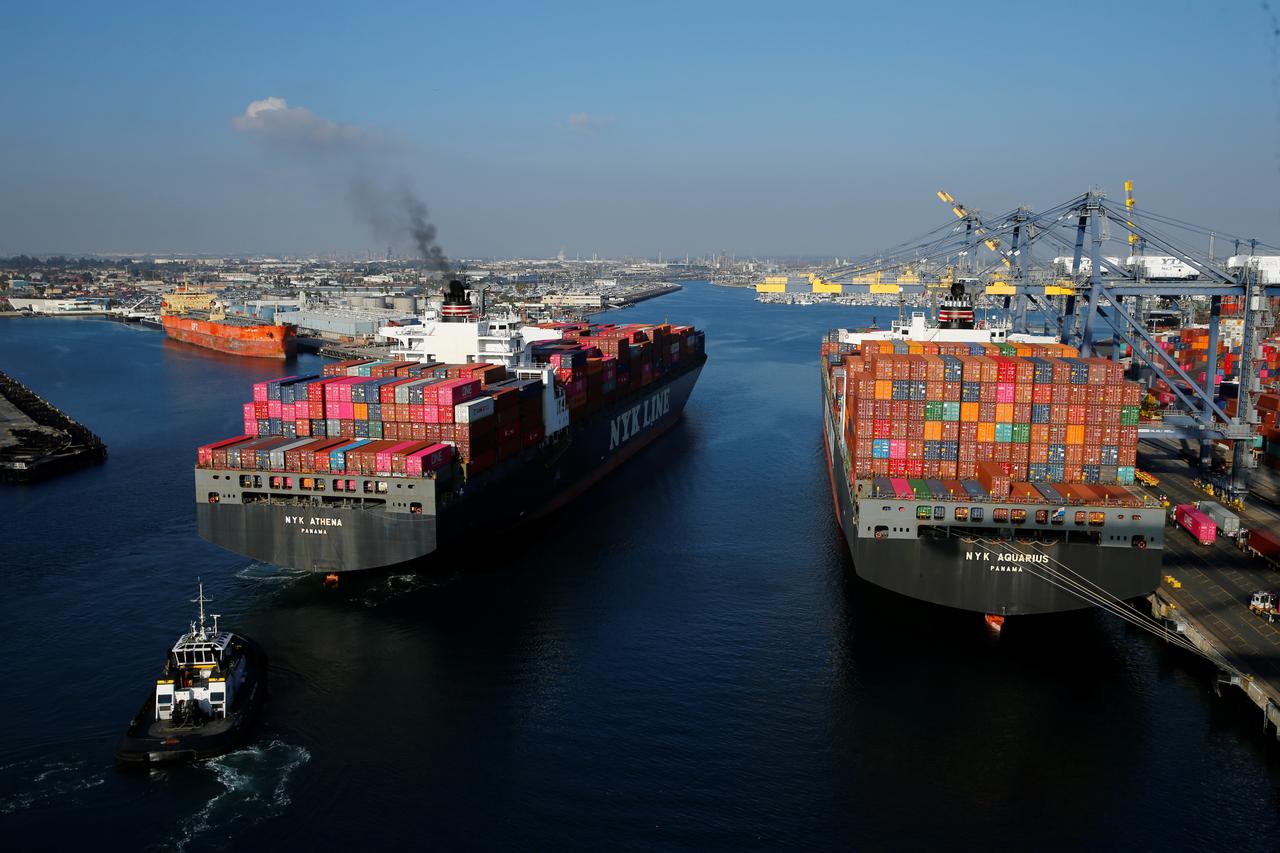
Furthermore, it associates the lack of economic growth in Pakistan to the recurring balance of payments crisis every few years. However, what is more crucial is that the report recognises the role of antiexport bias adversely affecting export growth such as the policies favouring high returns in domestic markets and investments primarily in non-tradable sectors, such as telecom and financial sectors.
The report recommends several measures to improve export competitiveness, such as enhancement of productivity, participation in global value chains, tariff rationalisation, lowering the cost of doing business and implementing the national single window strategy. Despite a change of the minister heading the Finance Division, it is essential to comply with the recommendations. However, there is a need to analyse the trade pattern of Pakistan in recent months to have a better understanding of the dynamics of the existing import-export gap.
Despite no growth in exports, trade deficit shrinks 13%
Considering the data of the Pakistan Bureau of Statistics (PBS), the trade deficit in first nine months of FY19 dropped 13.02% over the same period of FY18. Imports decreased 7.96% and exports increased only 0.11%. Exports in March 2019 were 11.13% lower than exports in March 2018, indicating a worrying sign. However, the trade deficit decreased in March 2019 compared to March 2018, driven by a 20.88% fall in imports. Exports have not increased while the decline in imports has been the driving force behind the reduction in the trade deficit.
Trade deficit shrinks 5% to $16.8b as imports go down
All groups, except for petroleum products and agricultural and other chemicals, displayed a decrease in imports in the period between July 2018 and March 2019 over the same period of previous fiscal year. The largest decline was in the transport group and machinery group. Imports of power generating machinery decreased more than 49% while imports of completely built units (CBUs) of buses, motor cars and motorcycles declined 42%. However, there was a 3% increase in imports of completely knocked down (CKD) units of motor cars.
Interestingly, imports of parts and accessories also decreased 10%, indicating the intensity of import restrictions on transportation vehicles. Such a decline has translated into higher prices of locally assembled vehicles in Pakistan.
The overall decline in imports in the transport group was approximately $1.16 billion. Total imports decreased $3.5 billion in the period between July 2018 and March 2019 over the same period of FY18.
Imports of machinery products fell $1.74 billion, with a decrease of $946 million in imports of power generating machinery. It is important to note that there was also a drop in imports of productive machinery such as office machinery, textile machinery and electrical machinery and appliances.
Similarly, imports of construction and mining machinery also decreased. Within the petroleum group, imports of liquefied natural gas (LNG) increased 49% while imports of petroleum products decreased 15% in July-March FY19 compared to the same period of previous fiscal year. This restructuring of imports is likely to drive future trends as Pakistan increases its preference for LNG to crude oil.
In textile products, imports of raw cotton decreased 28% while those of synthetic fibre increased 8%. It is important to ask whether this is due to a much-needed change in the composition of finished textile products.
Exports Data for the July-March FY19 period suggests a fall of 2.4% in food products and an increase of just 0.08% in textile products over the values reported in the same period of FY18. Exports of basmati rice and of fruits increased 5.8% and 8.7% respectively.
Among textile products, exports of knitwear had been the main contributor, which increased more than $183 million or 9.3%. However, the quantity increased 14%, suggesting a fall in unit value. Exports of bed wear increased 2.69% whereas exports of intermediate goods such as cotton yarn and cloth declined.
Considering other manufactured products, exports of sports goods, leather goods and surgical equipment declined. Except for specific textile products, exports of major products from Pakistan were on the wane. Data from the International Trade Centre’s (ITC) Trademap.org shows exports of articles of clothing (HS 61 and 62) from Pakistan increased year-on-year by 9.3% in 2018 and 8.3% in 2017. This reinforces the trend discussed earlier. Exports of articles of clothing to the US increased almost $200 million and to the European Union by $166 million.
The largest increase in dollar terms, of $238 million (18.5%), in 2018 was reported for men’s or boy’s ensembles of cotton. The most important recipients were the US and the EU. Overall, imports of Pakistan increased to $60.1 billion in FY18 from $57.4 billion in FY17. There was an increase of $3.4 billion in imports of mineral fuels and decrease of $1.07 billion in imports of machinery.
Imports of crude oil increased $1.7 billion, imports of LNG rose $1.62 billion and imports of coal increased $560 million. There was a restructuring of imports as the share of mineral products in total imports increased while that of machinery decreased. Within mineral fuels, LNG gained a greater share while refined products lost their share.
The new finance minister has a Herculean task ahead as he not only has to tackle the balance of payments crisis, but also has to implement reforms and face resistance from several stakeholders. Although the restructuring of imports has helped reduce the trade deficit, a sustainable export growth is necessary to eliminate the vicious balance of payments crisis that erupts every few years.
It is imperative that the government makes sure the exporters are not only globally competitive, but they continuously adopt higher and better standards in order to move up the quality ladder and generate greater export revenue.
THE WRITER IS THE ASSISTANT PROFESSOR OF ECONOMICS AND RESEARCH FELLOW AT CBER, IBA.





1719053250-0/BeFunky-collage-(5)1719053250-0-270x192.webp)











COMMENTS (1)
Comments are moderated and generally will be posted if they are on-topic and not abusive.
For more information, please see our Comments FAQ